Portobelo
Introduction
Portobelo is a small town in Panama directly across the isthmus from Panama City, on the northern, Atlantic coast. I took a day trip here.
Portobelo has a history similar to those of many Caribbean cities: The site was "discovered" by Spanish explorers, inhabited by them and their slaves as they built their own facilities and used the place for their operations, played host to a number of battles, and now has a diverse population of people of various ethnic backgrounds.
Here are the reasons to visit Portobelo:
- Slower-paced, relaxing, small village style of life
- An excuse to ride the Panama Canal Railway
- Congo, Afro-Caribbean culture
- Public art
- Spanish colonial history
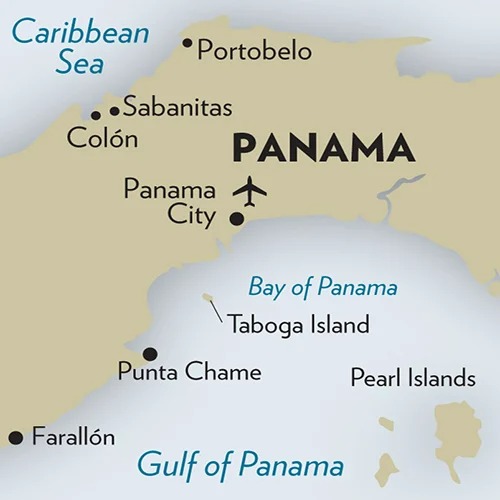
Puerto Bello
The village has its name because Christopher Columbus originally named the site in 1502 "Puerto Bello," which means "beautiful port." (The Spanish used the site as a port for shipping silver that they were extracting from South America--various places throughout modern day Peru and Bolivia--back to Spain.) Somehow, by 1600, the name had morphed into "Portobelo." In 1597, a Spanish explorer, Francisco Valverde y Mercado, founded a town inland from the port site and named it after the harbor, but he spelled the name "Portobelo." This shows that sometime between 1502 and 1597, the name had changed, but no one really knows why. Records also show that during this time the site was encountered by English "privateers," so there is a chance that the name was somehow warped while being used back and forth between Spanish and English speakers, but this is 100% speculation on my part.
Source: https://read.dukeupress.edu/hahr/article/14/1/93/155859/Porto-Bello-Puerto-Bello-or-Portobelo
Privateer
Since privateers were mentioned, I might as well take this opportunity to write briefly about how ridiculous the word seems to me. Privateers were men who roamed the Caribbean Sea seeking "commerce opportunities," which seems to have often included raiding settlements and stealing goods. In other words, they are basically pirates. But, because they were European and had the "official stamp of approval of a Western government," they received the esteemed title of "privateer," which was "different than a pirate."
Crossing the Isthmus: Panama Canal Railway
My home base in Panama, which is probably the same for many tourists visiting the country, was Panama City. To get to Portobelo from Panama City, you need to first get to Colón, Panama's "second city" across the isthmus from Panama City, and then from Colón to Portobelo. To get to Colón, you can travel by either coach bus or Panama Canal Railway. I decided I would take the train to Colón and then the bus back at the end of the day.
The Panama Canal Railway was so cool. It takes you through the Panama Canal Zone and you get to see not only the ships traveling through the various waterways of the canal, but also all sorts of sites--towns, parks, and other types of infrastructure--that tell the fascinating stories of the history of this area.
The train only runs twice per day: Once from Panama City to Colón at 7:15 a.m. and once more from Colón to Panama City at 5:00 p.m. There is no website to buy train tickets online. I bought my ticket at the station in Panama City. A one-way tourist ticket will range between $15 and $25, depending on your age (child, adult, or senior) and the type of car where you want to ride (luxury coach vs. luxury dome car).
Here is the railway's website: http://www.panarail.com/
Here are the locations to put in your map in order to see exactly where each one is:
- Panama City: Estación de Pasajeros de Corozal
- Colón: Estación de Pasajeros del Atlántico
Unless you are staying within walking distance of a station, you will likely need a taxi to get to it. If in Panama City, it is easy to call an Uber. In Colón, you will likely have to flag or call a local taxi.
Here is a link to a blog post I wrote about the Panama Canal Railway with lots of pictures: https://www.willdodds.com/trav...
Below is a picture that shows the train's path from Panama City to Colón.
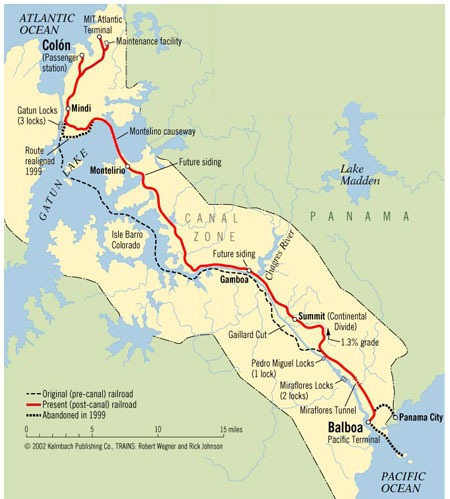
Colón to Portobelo by Bus
The train ride was luxurious. This point, however, is where things change.
The one-way train journey ends at the Panama Canal Railway station in Margarita, a neighborhood in Colón. From here, the journey to Portobelo is 60-90 minutes long.
There are two ways to get there: By taxi or Local Bus. The taxi will cost $28-$35. The bus will cost $2. There will be taxi drivers waiting at the Panama Canal Railway station in Margarita who can take you to your destination. To save money and because I am a man of the people--Genuinely, when you travel, you should experience life as local people live it, right?--I took the bus.
There isn't really a schedule or app that you can use to track these busses. Yeah, there are websites and blogs that explain how the busses work, but they don't all provide the same information. The best website for helping yourself understand the different options you have for navigating from almost any point A to point B not only in Panama, but around in the world, is Rome2Rio.com. Still, though, the best way to navigate the local bus system is to ask people who live in Panama and use it regularly. They will know where and when to go.
I found out that a bus from Colón to Portobelo leaves every hour from the Colón Bus Terminal.
Colón Bus Terminal
Put this location into your map: Terminal de autobuses, Av Herrera, Colón, Panamá.
You will see that the bus terminal is not far from the rail station in Colón. The taxi drivers waiting at the rail station can take you to the terminal, but because the walk to the bus terminal wasn't long (only six minutes) and because I wanted to avoid negotiating a taxi fare, I walked.
The first picture below shows you the route from the rail station to the bus terminal.
When you get to the bus terminal, you will see that it is pretty simple--A waiting area in the middle covered by a roof with a ticket booth surrounded by a lot with busses enclosed partially by a fence. There wasn't a schedule posted anywhere--Locals "just know." As a tourist, you have to go to the ticket booth, ask the attendant if there is a bus that will take you to your destination, how much it costs, what time it leaves, and where to wait for it when you buy your ticket.
The second picture below shows the terminal.
Photo credit: Normally, most of the photos that I post are my own with the exception of maps (like the two above) that are freely available on the Internet. However, the second picture below I took from the online newspaper Día a Día.
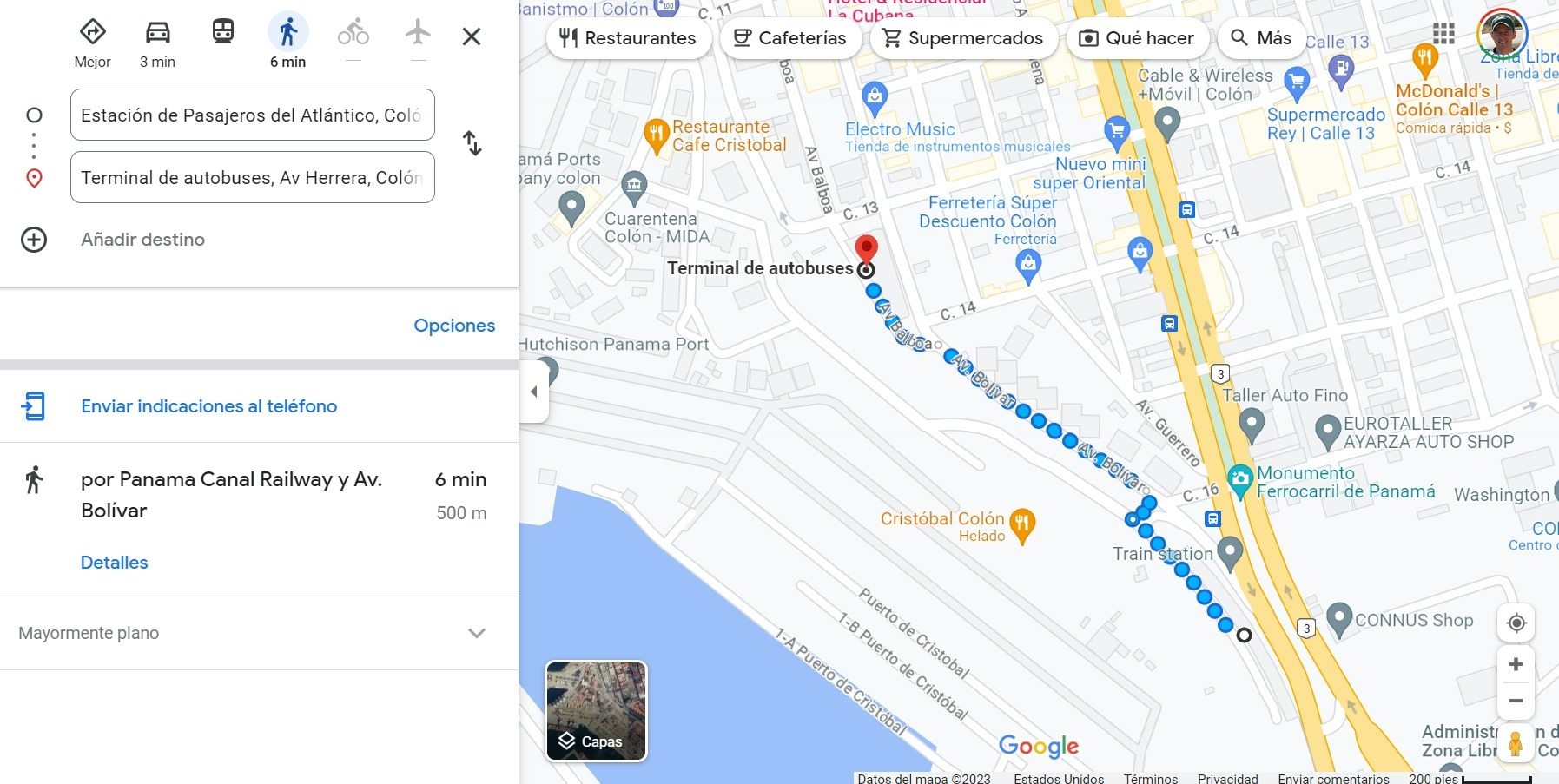
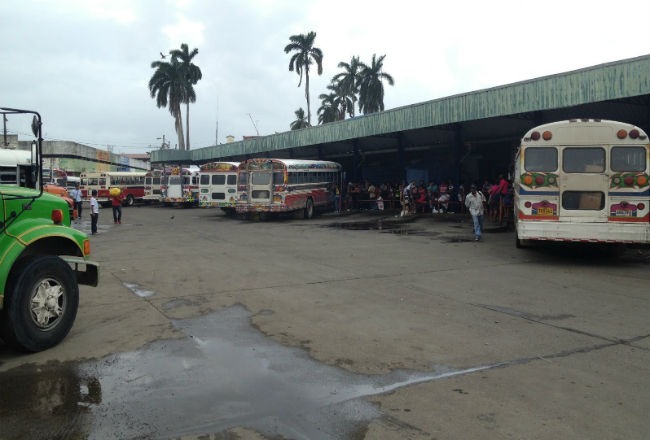
The Local Bus
At the terminal, you will see different types of busses. Some, like the one from Colón to Panama City that I will take at the end of this day (a one-hour trip), are coach busses. Others are "local busses."
The Local Bus is an old, painted school bus. There are many of them. Each one runs the same route every day in and around a "locality." It stops along the route to pick up anyone--children going to and coming from school, someone going to their grandmother's house for lunch, an out-of-place tourist like me, etc.
Below you can see examples of local busses.
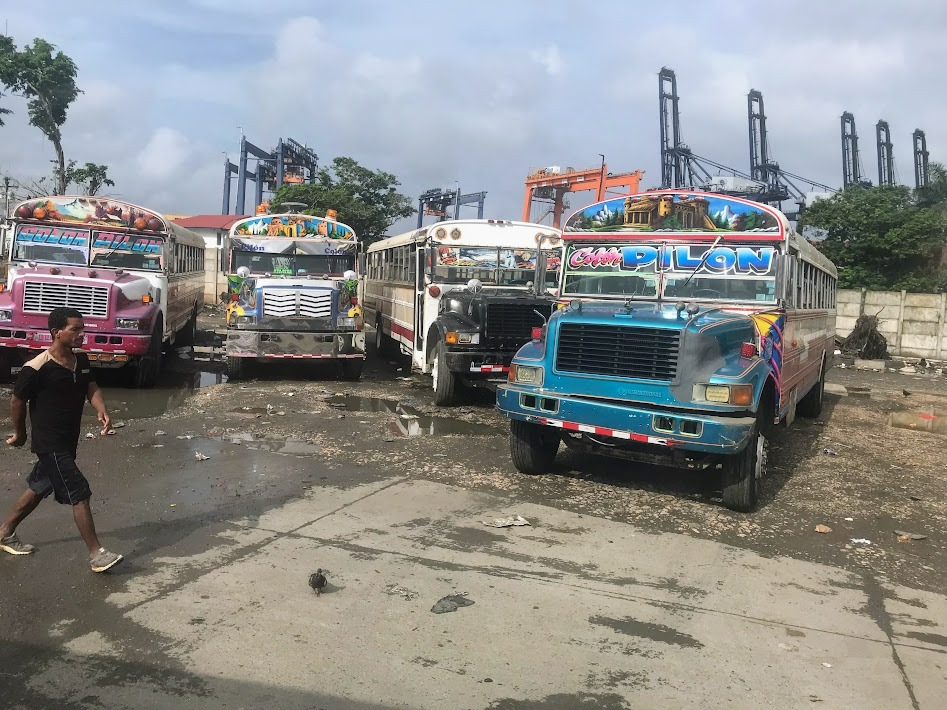
Colón Bus Terminal --> Portobelo
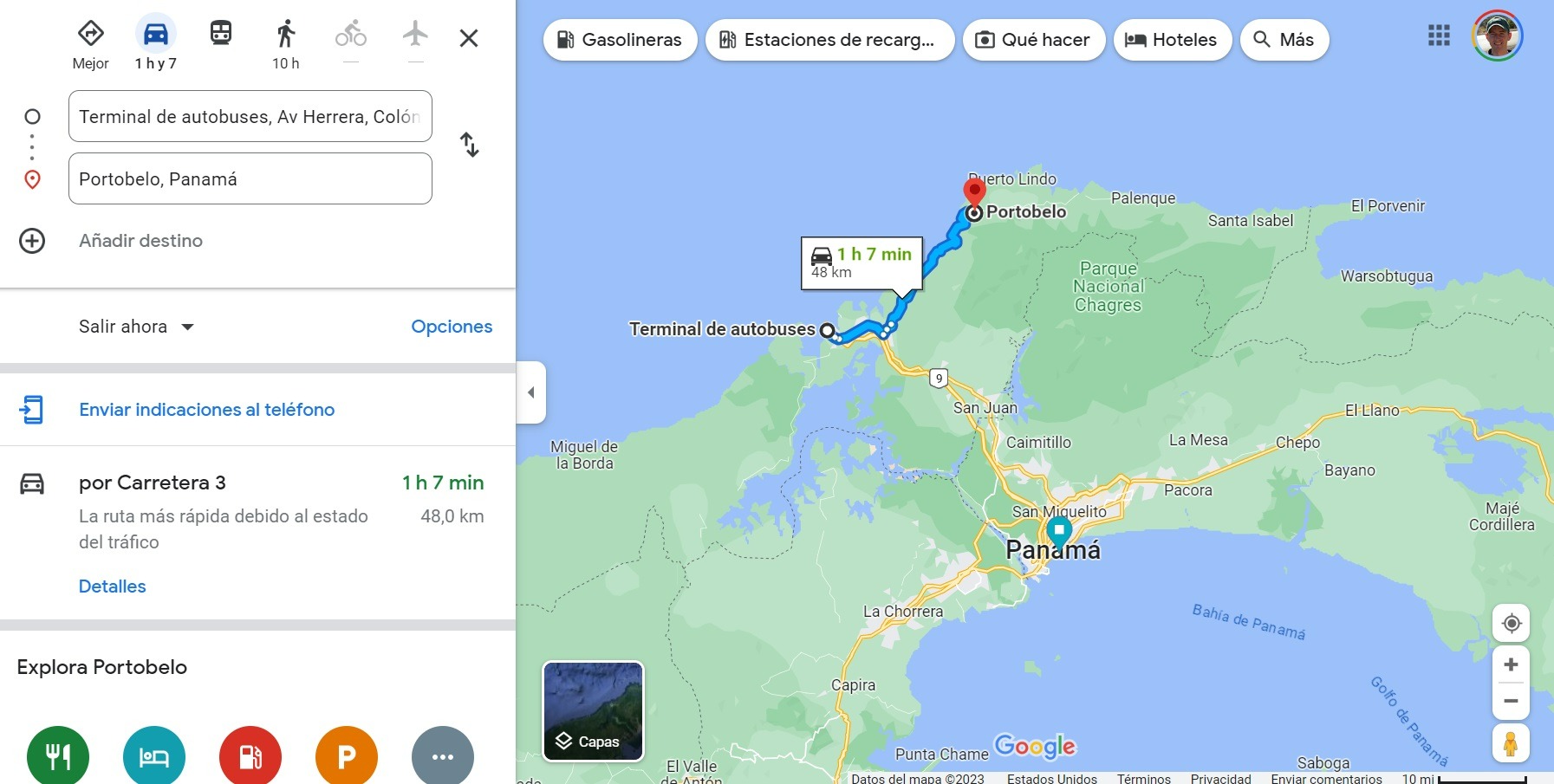

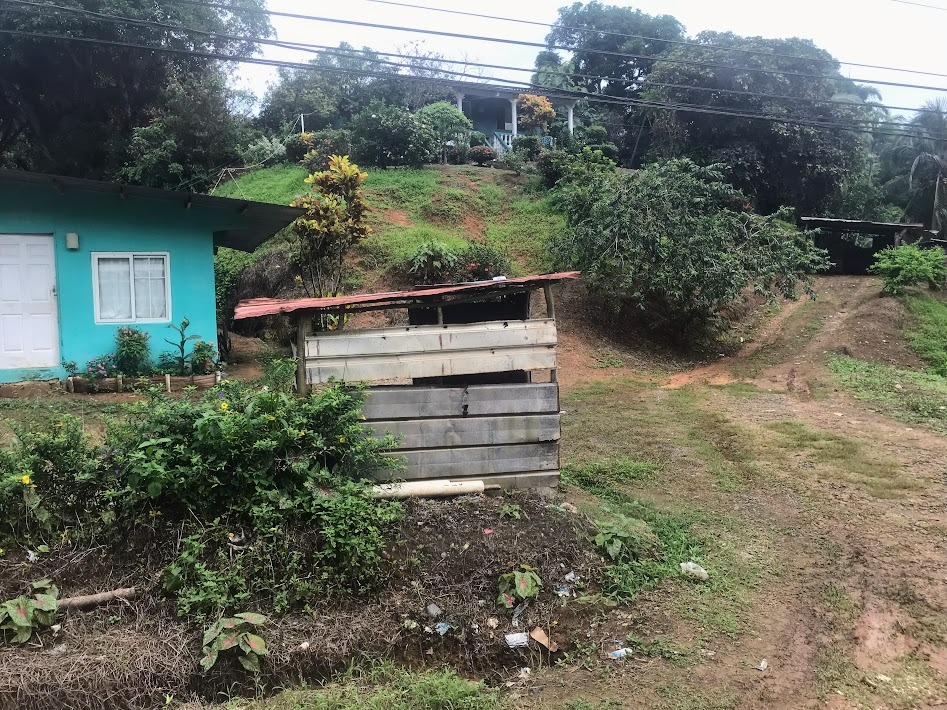
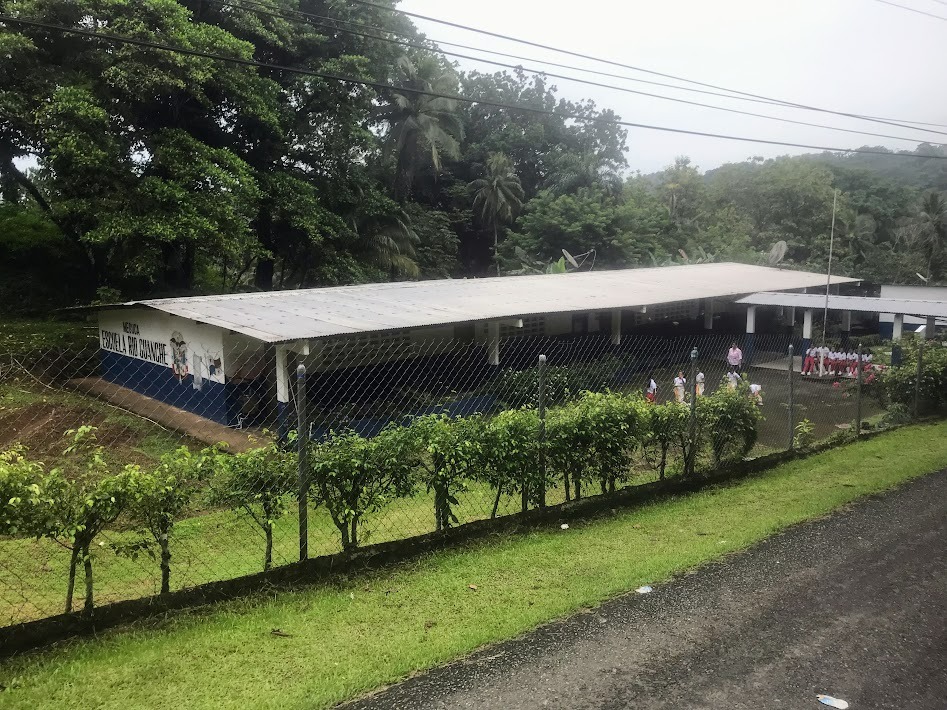
"Island Life"
Portobelo is not an island, but it certainly has "island feels." It lies on the Caribbean after all... Life here is different than in Panama City, the big city with skyscrapers, malls, fancy neighborhoods, and Ubers. The school bus right away showed. As I walked around the village, it was quiet. Life seemed to move slowly here.
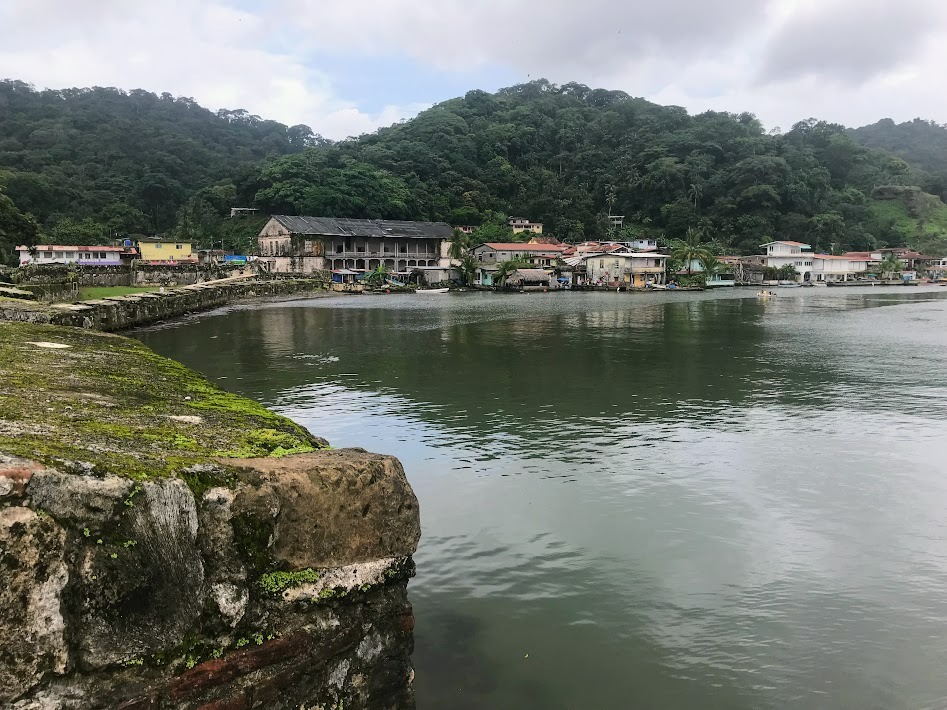
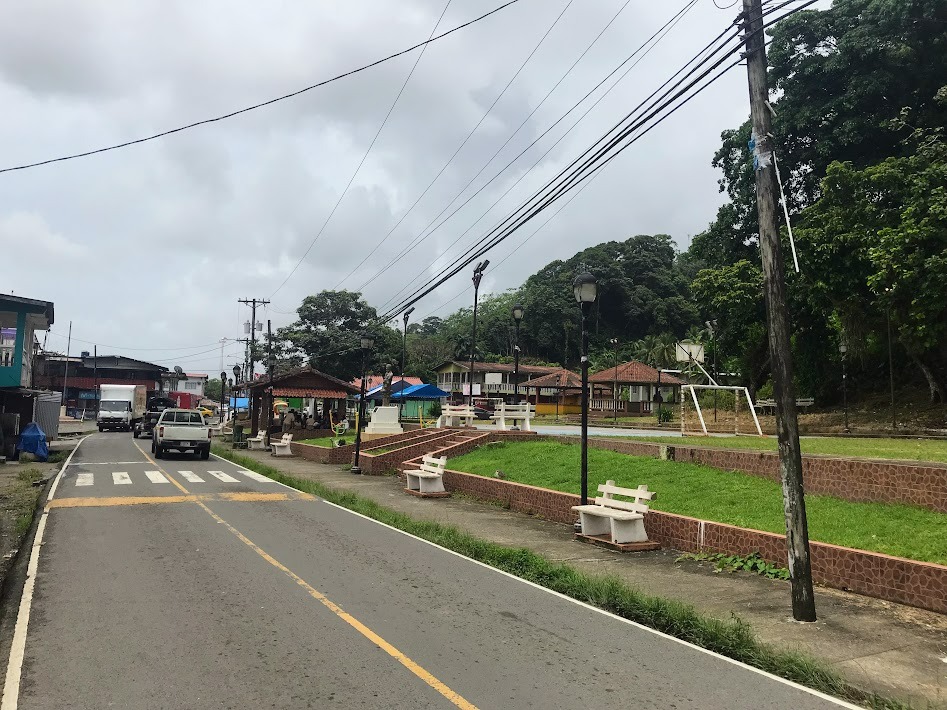
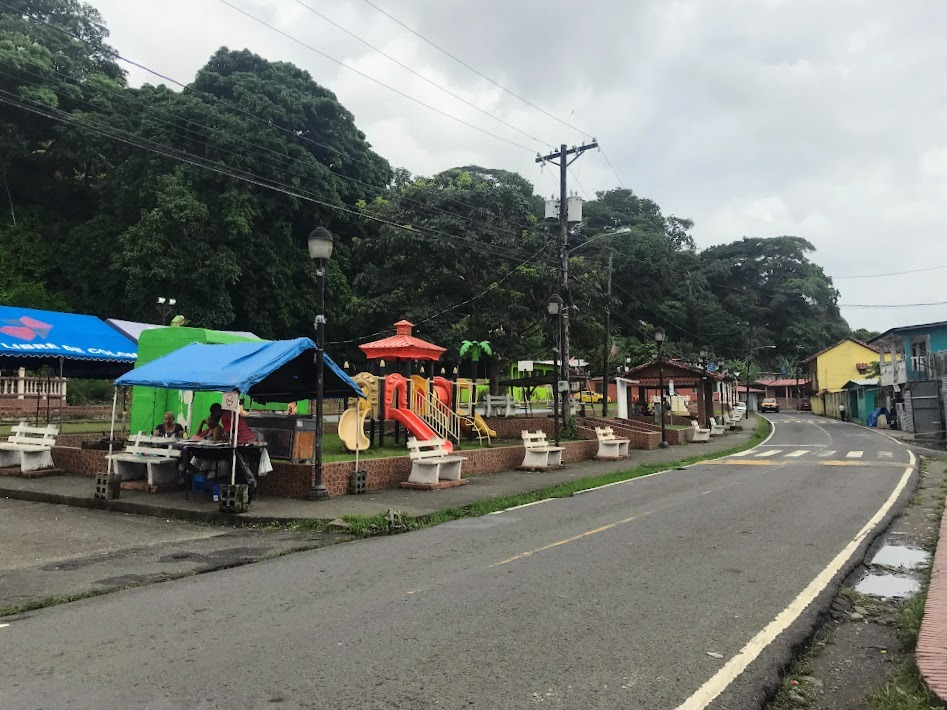
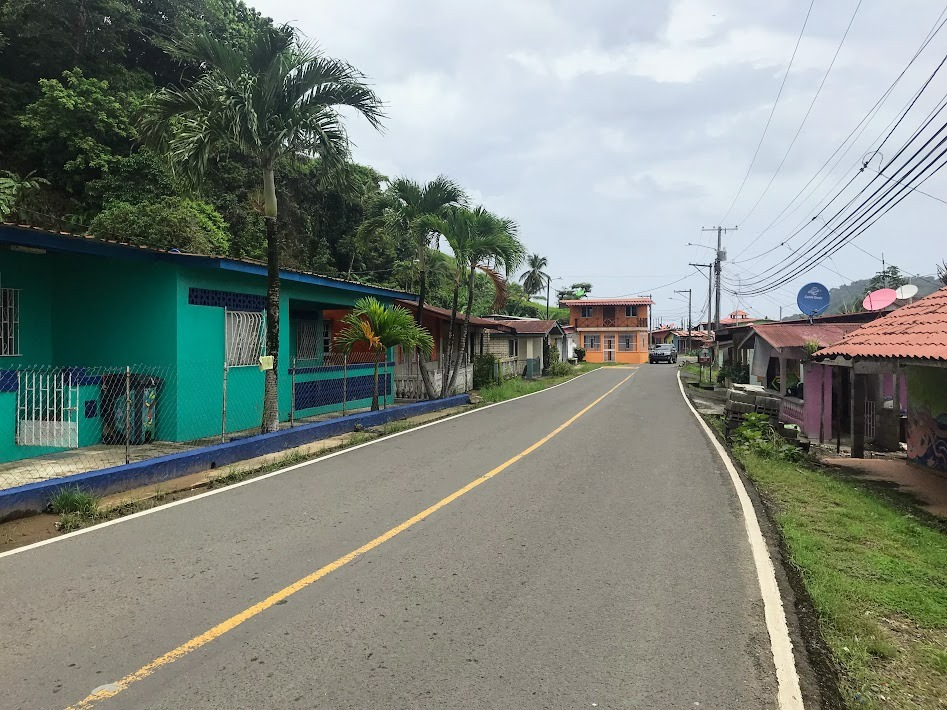
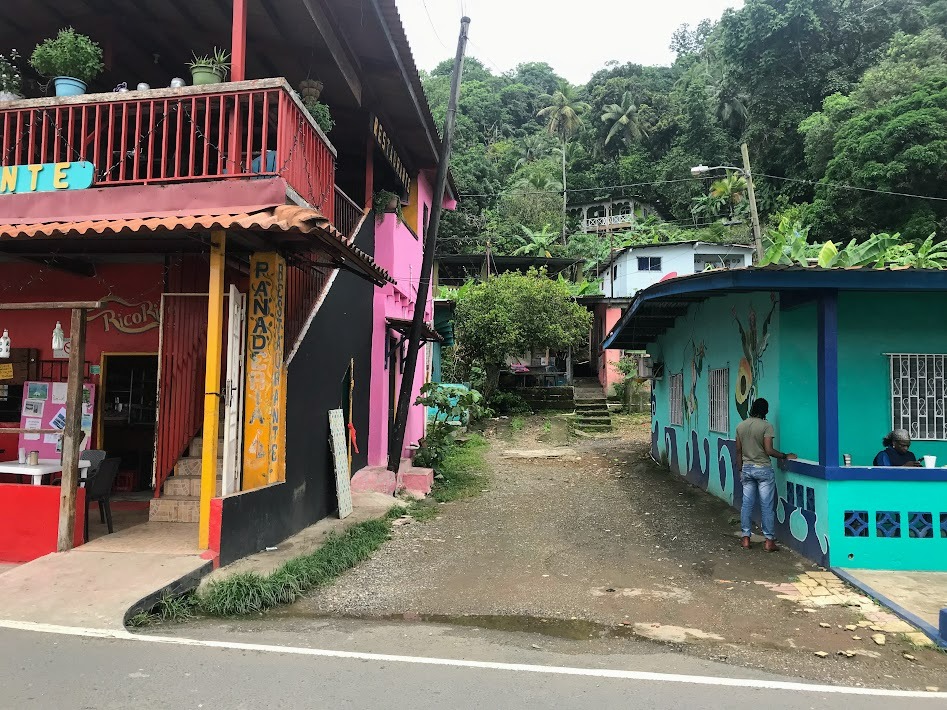

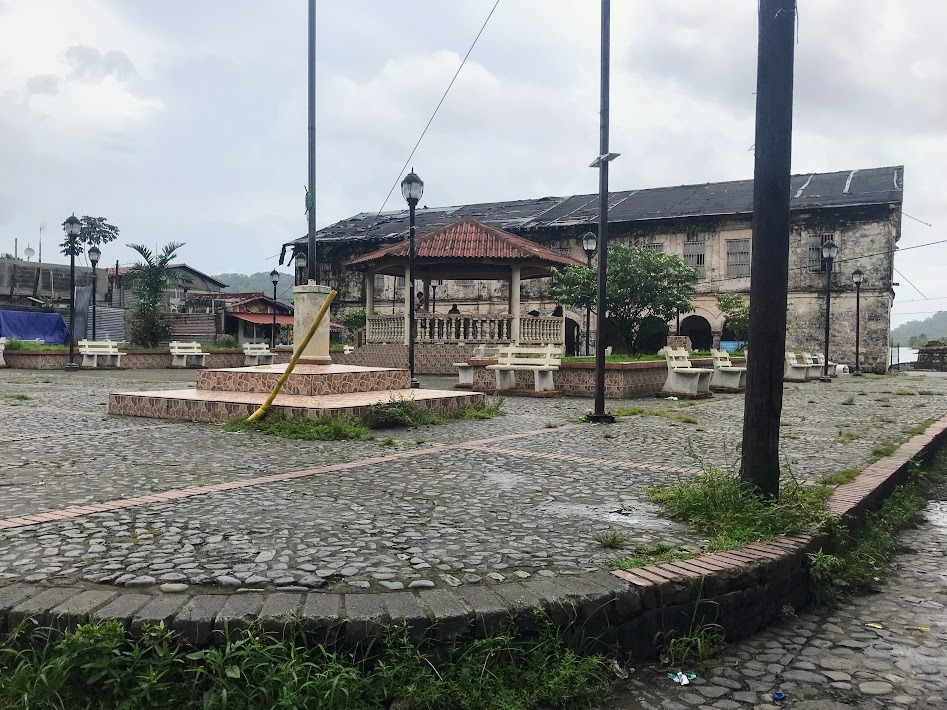
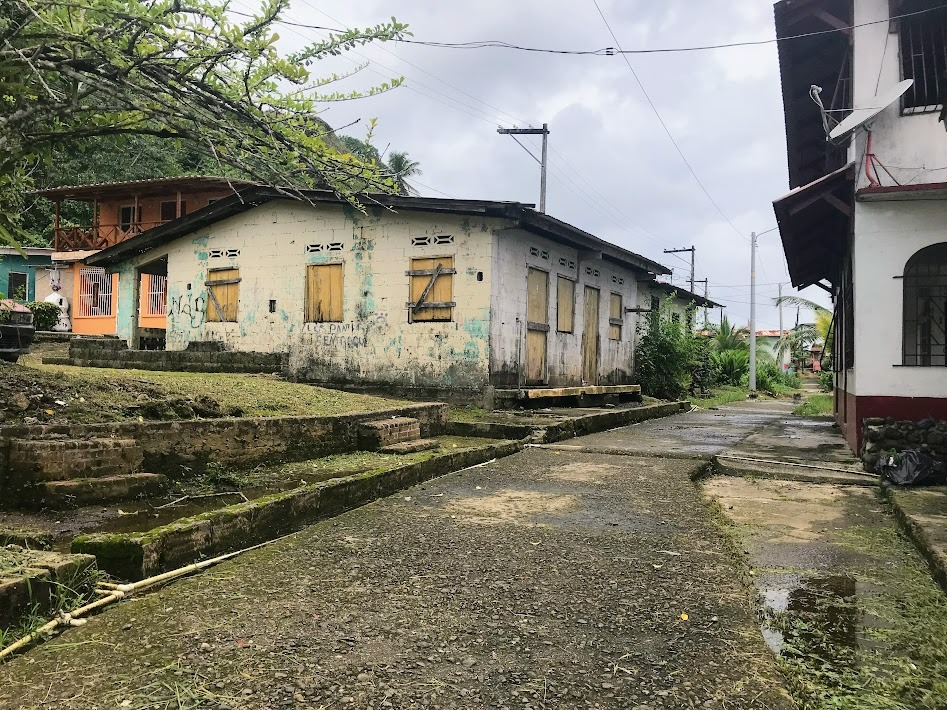
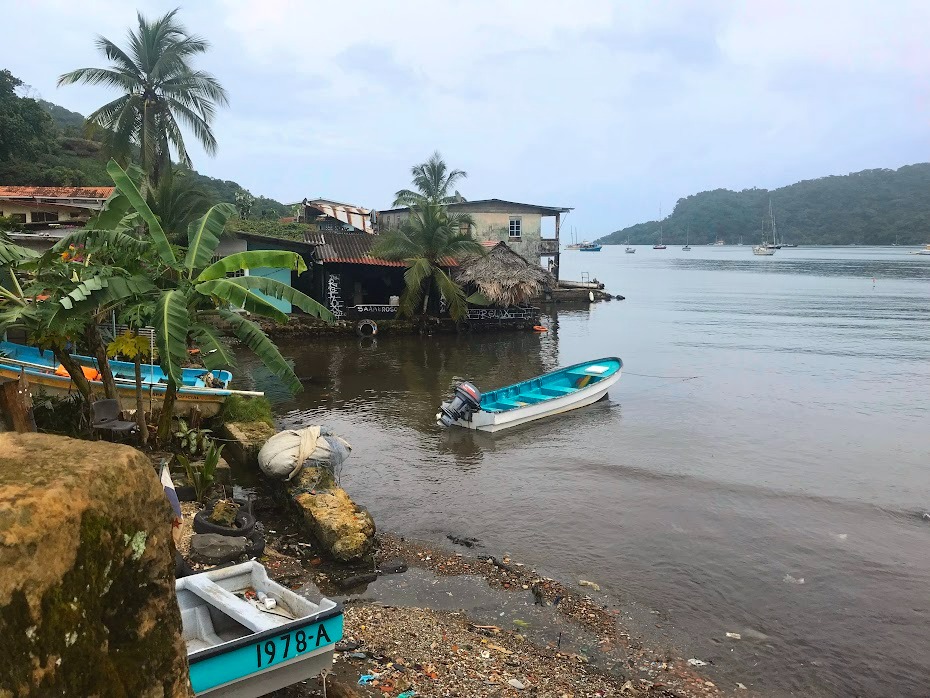
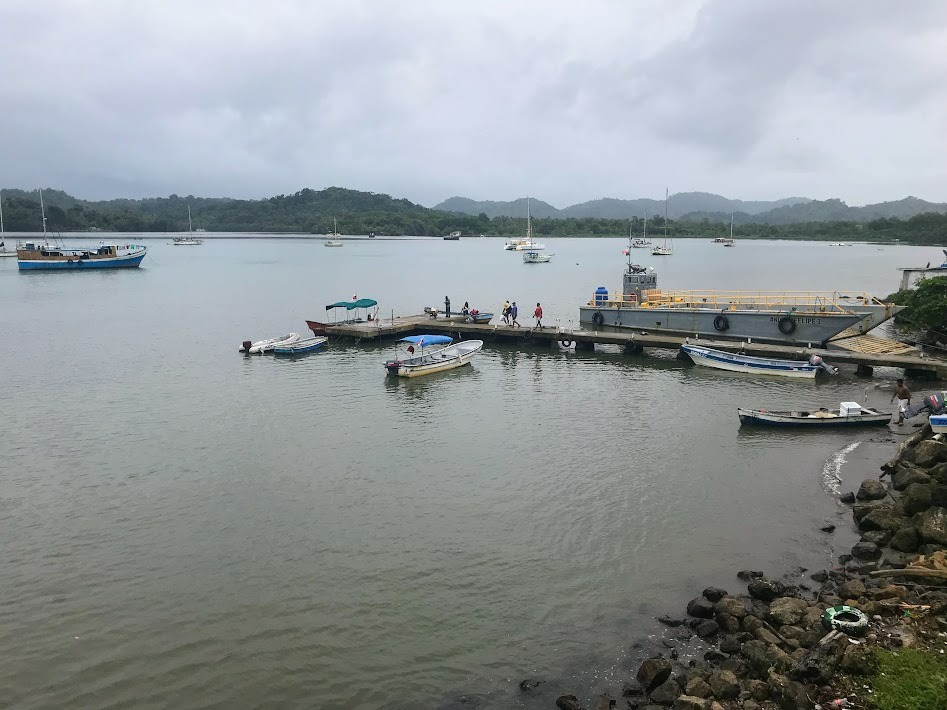
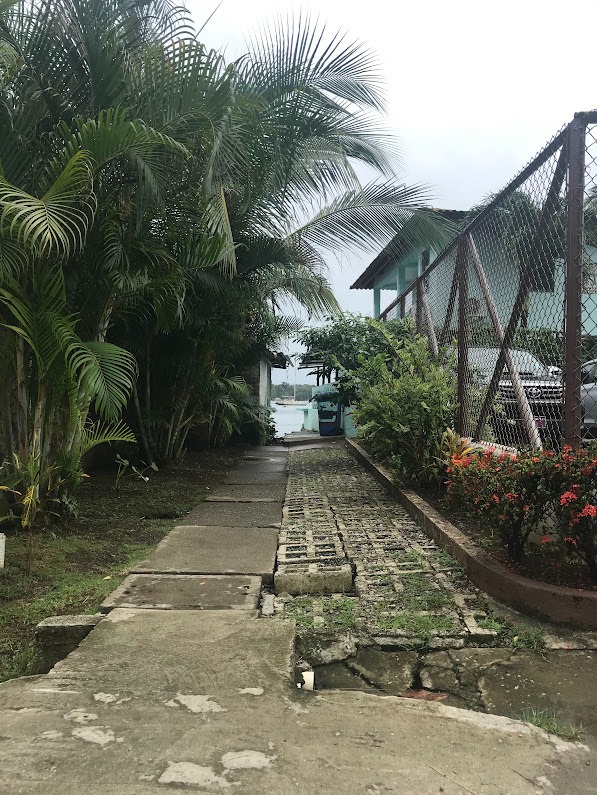
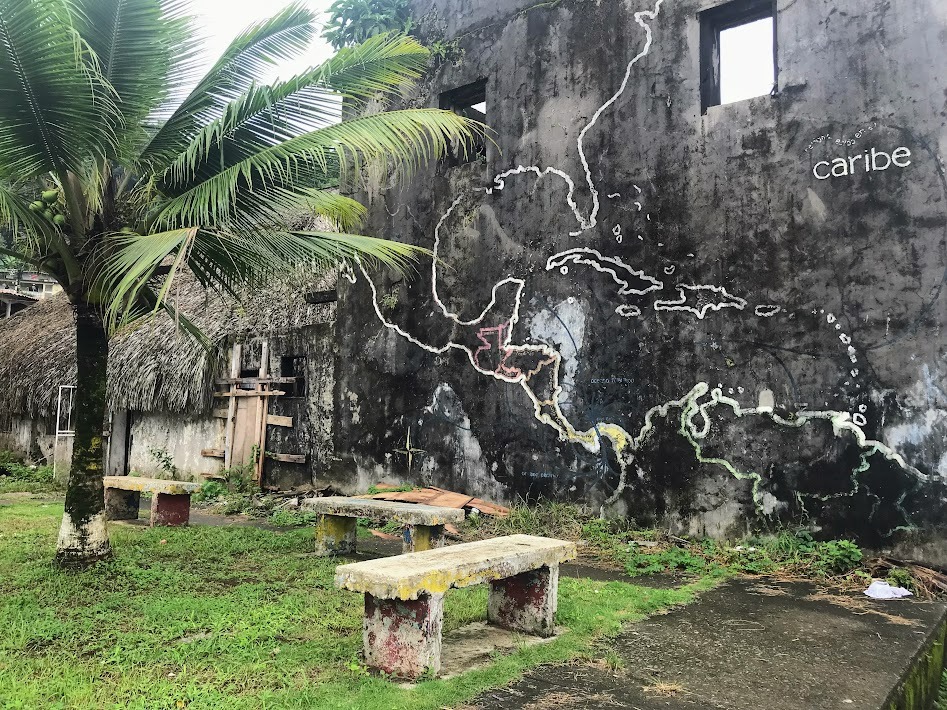
Portobelo Map
Here is a map of Portobelo that shows some of the sites I visited and will write about below.
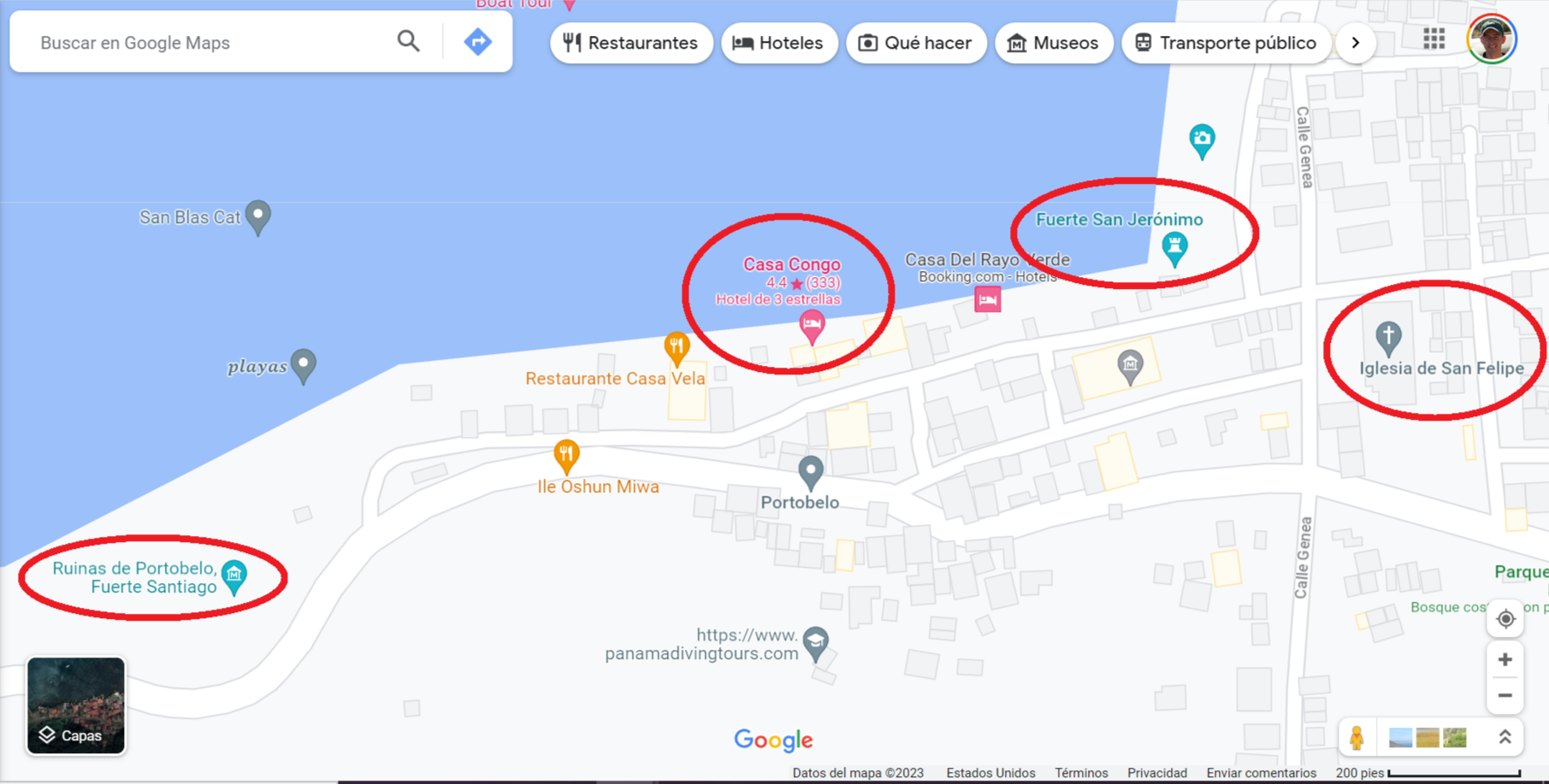
Fuerte Santiago
There isn't much information that I could find about who lived in or around Portobelo before Spanish "discovery," just that the arrival of Europeans resulted in the decimation of 90% of Panama's indigenous population... So, I guess that for this blog post, the history of Portobelo starts with the Spanish...
The Spanish decided to use Portobelo in the 16th century as a port for shipping silver that they had extracted from various mines in modern day Peru and Bolivia back to Spain. Like they did in many of their coastal settlements throughout the Americas, they built defense systems in order to protect themselves from potential invaders, like pirates and privateers.
In Portobelo, there are remains of two forts: Fuerte Santiago and Fuerte San Jerónimo. They are both UNESCO World Heritage Sites, They are also on UNESCO's List of World Heritage Sites in Danger due to environmental factors, lack of maintenance, and uncontrollable urban developments.
You can read more about these forts (and San Lorenzo, a fort in Colón) on this page here: https://whc.unesco.org/en/list/135/
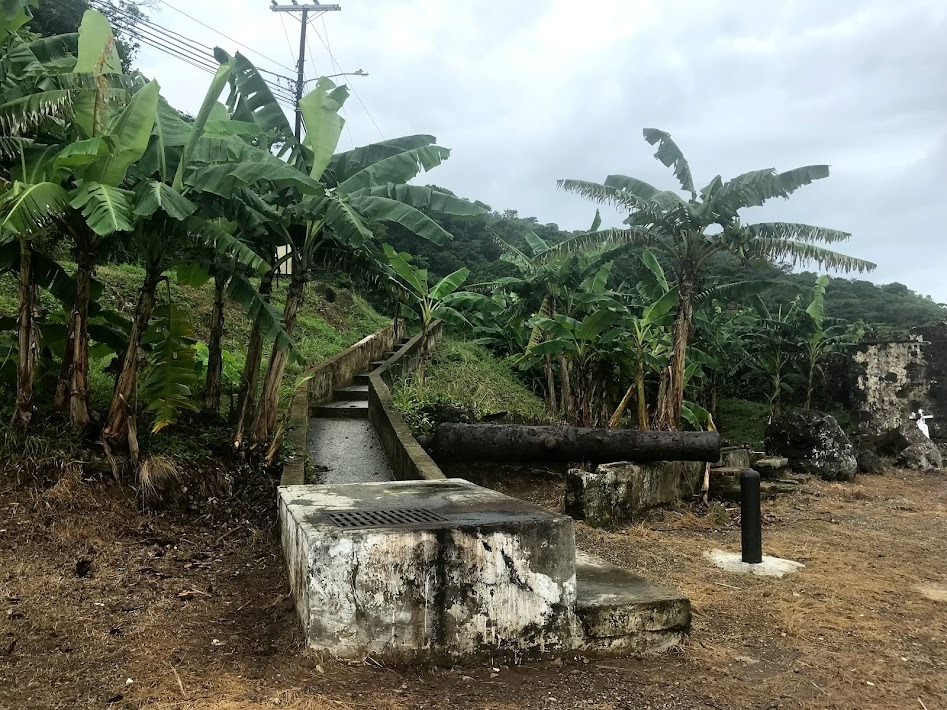
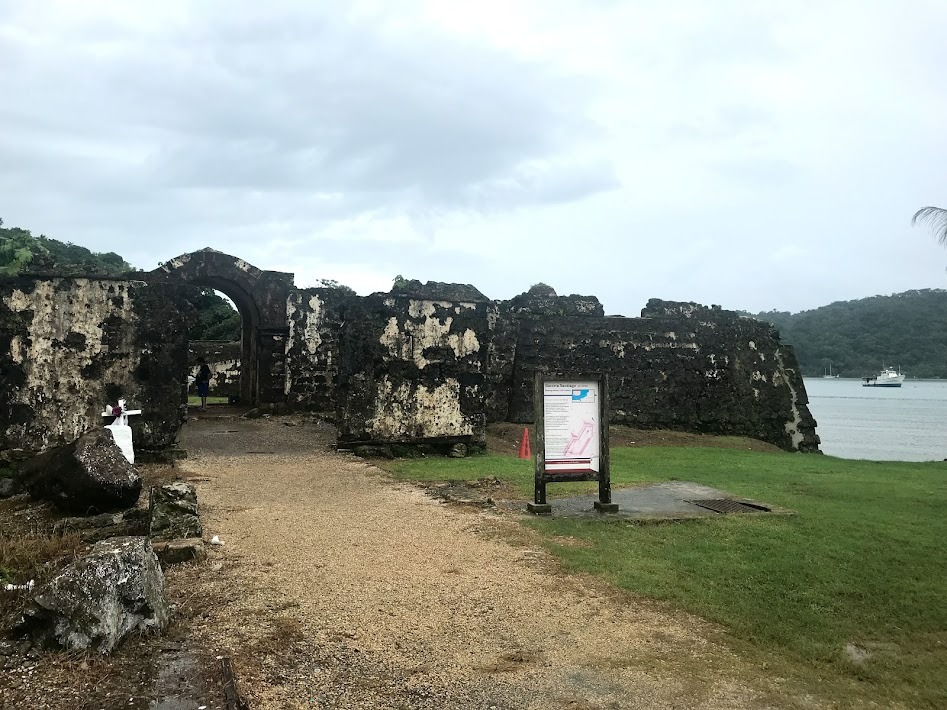
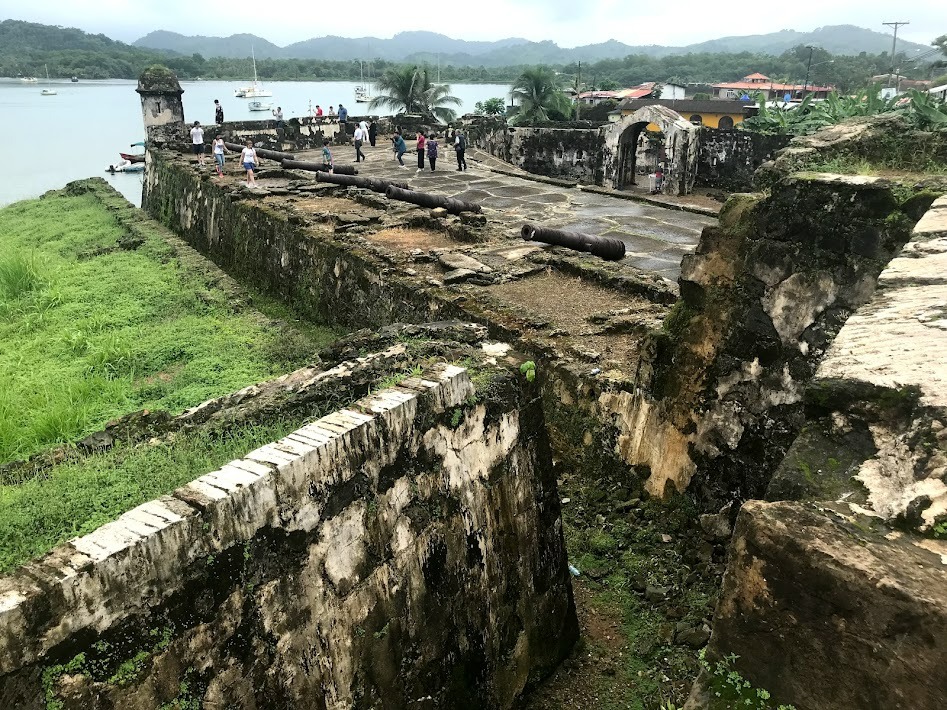
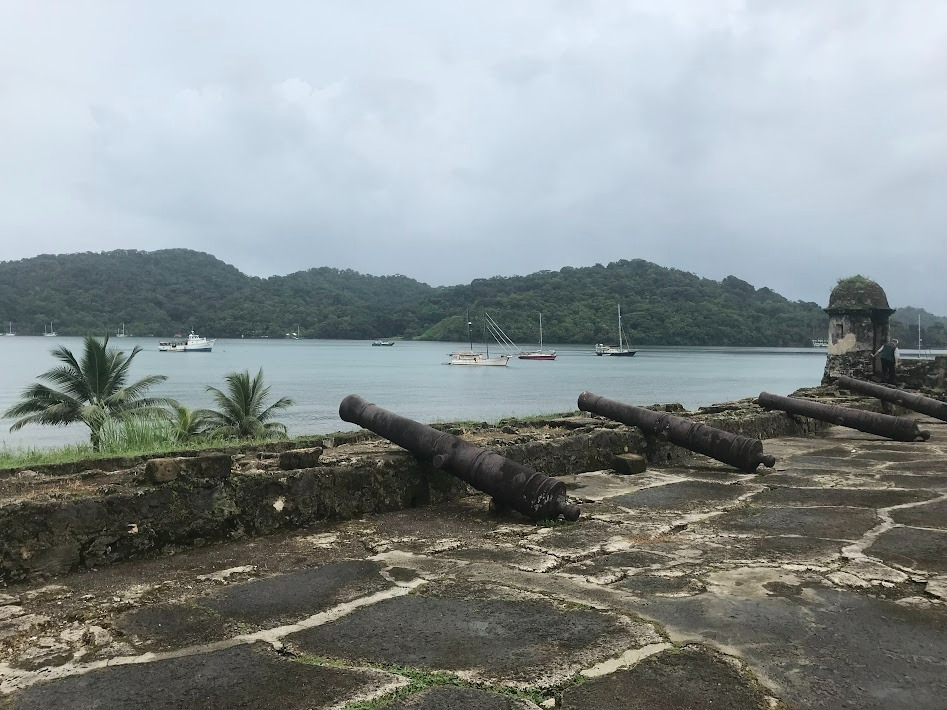

Fuerte San Jerónimo
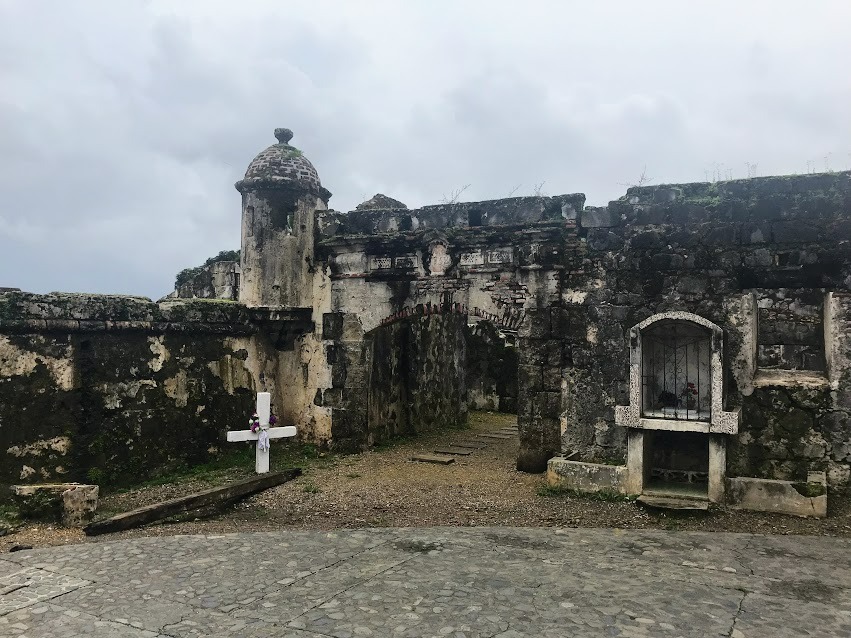
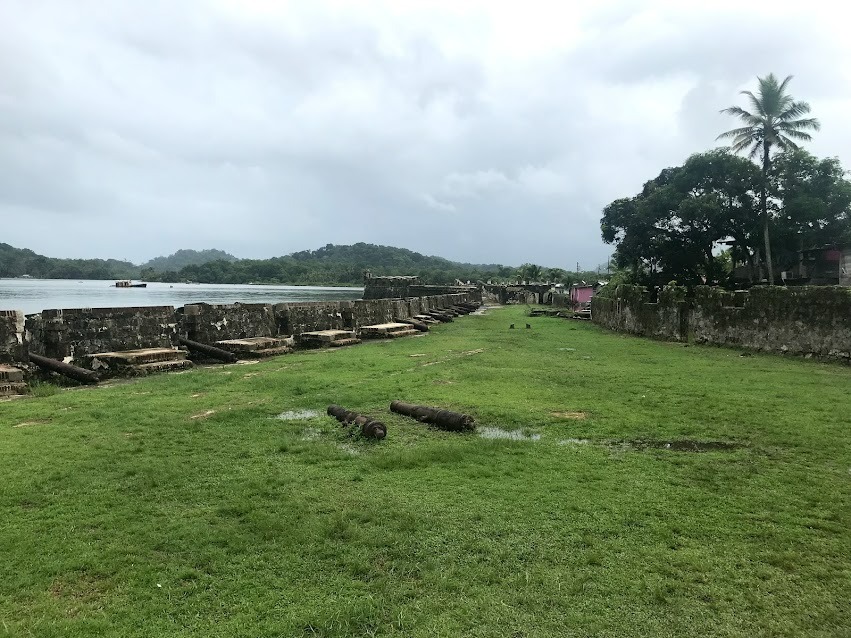

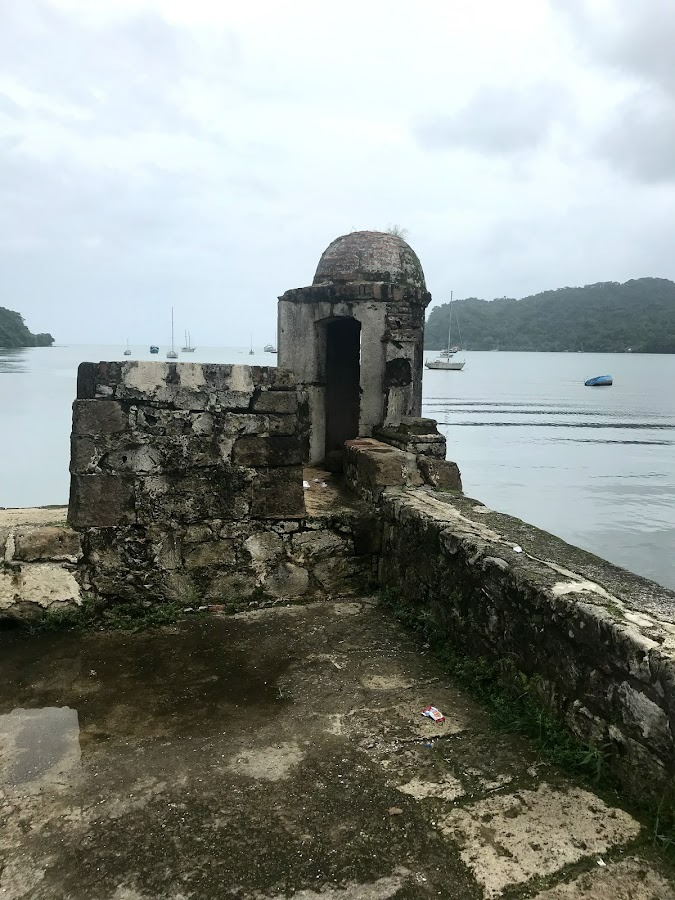
Museo de la Real Aduana de Portobelo
This is the Customs Museum of Portobelo. The building was initially used as a check-in point for merchants arriving at the port and a center for maritime transactions in the 17th century. In 1998, it was converted into a museum where you can encounter evidence of these goods and learn about the role that this zone played in the economic development of Panama.
Unfortunately, when I was in Portobelo in 2019, the museum was closed. Hopefully, if you visit Portobelo, it will be open. I don't think the museum has a website, but you can find its phone number via Google Maps.
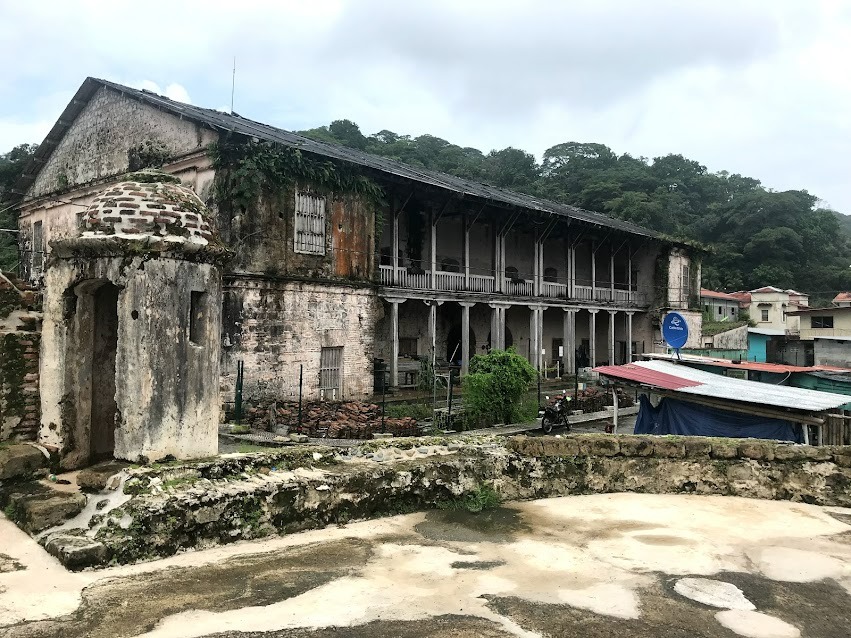
Iglesia San Felipe
Where the Spanish were, there are also likely Catholic churches.
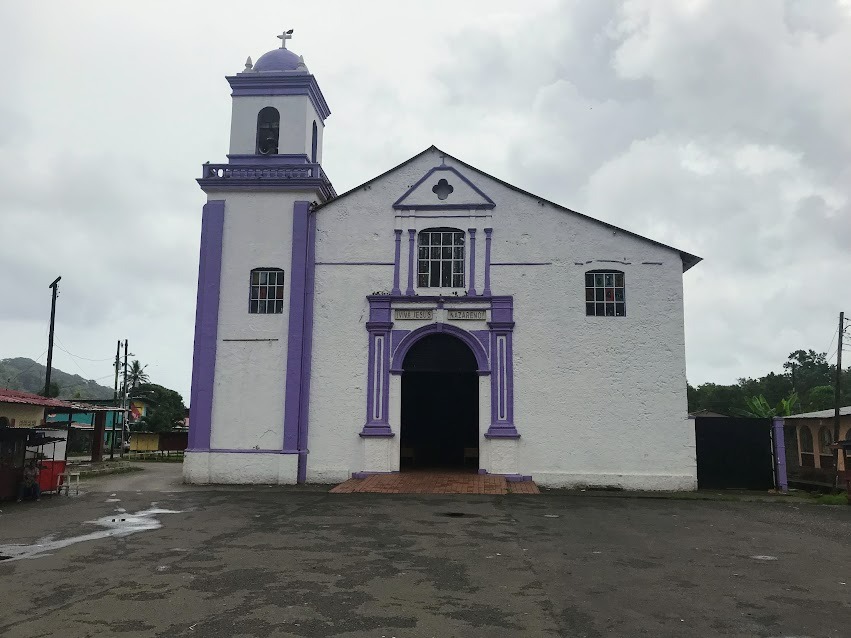
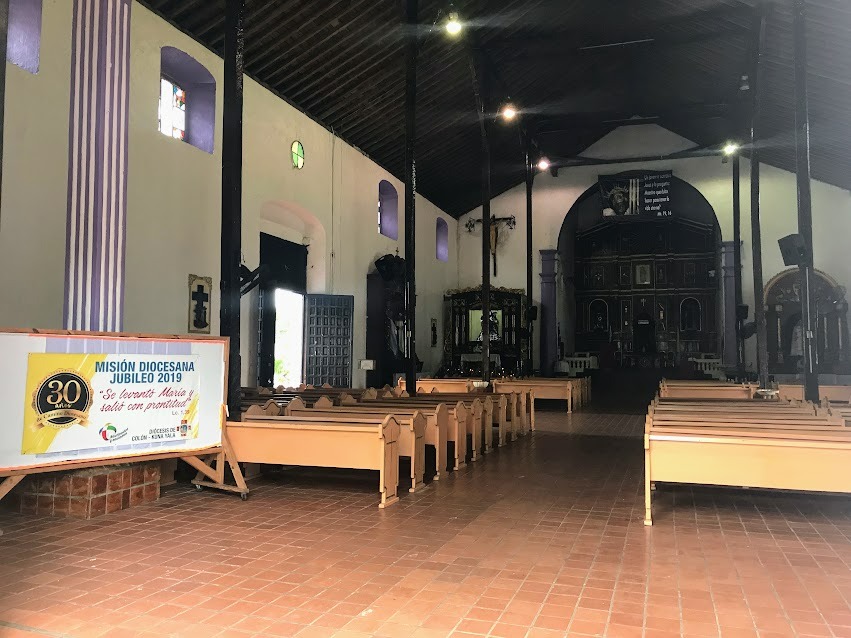
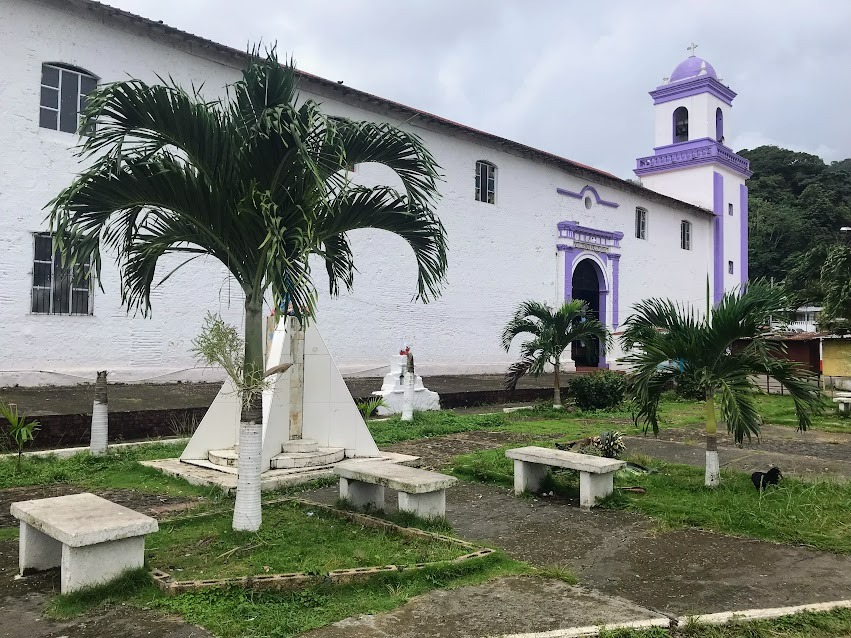
Los Cimarrones
The next group of people to understand are los Cimarrones, or "Maroons" in English. This word is used to refer to descendants of Africans in the Americas who escaped slavery. The word cimarrón comes from the language of the Taino people, the native people of many Caribbean islands. The Taino word is si'maran. In Spanish, this word means "vuelo de flecha," or "flight of arrow," which seems to me to mean someone who is fleeing and doing it fast, like a flying arrow.
The escaped slaves lived and mixed with indigenous people, creating an Afro-indigenous culture that lives on to this day in Portobelo and other parts of Panama. (You now see that the English word "Maroons," seems to have been created based on race. In Spanish, the word for someone of mixed black and indigenous ancestry is Sambu, or Zambo.
Los Congos
The next piece of history that will help you understand the people and culture of modern day Portobelo pertains to the Congo People.
During the 15th and 16th centuries, perhaps the strongest state in the Atlantic coastal region of western central Africa was the Kongo Kingdom. The picture below shows where the kingdom was. The Kongo Kingdom prospered due to the abundance of natural resources and a tributary system that helped them maintain an organized leadership structure.
Starting in the early 1500's, Kongo became a common source for the slave trade. The leaders of the tributary system mentioned in the paragraph above even sold their own people into slavery to Portuguese and Spanish slave traders. Many of these slaves ended up in Panama.
As such, Congo blood runs through the people of Portobelo, and Congo customs--music forms, dances, clothing, and myths--are still a vibrant and important part of life for people in the village.
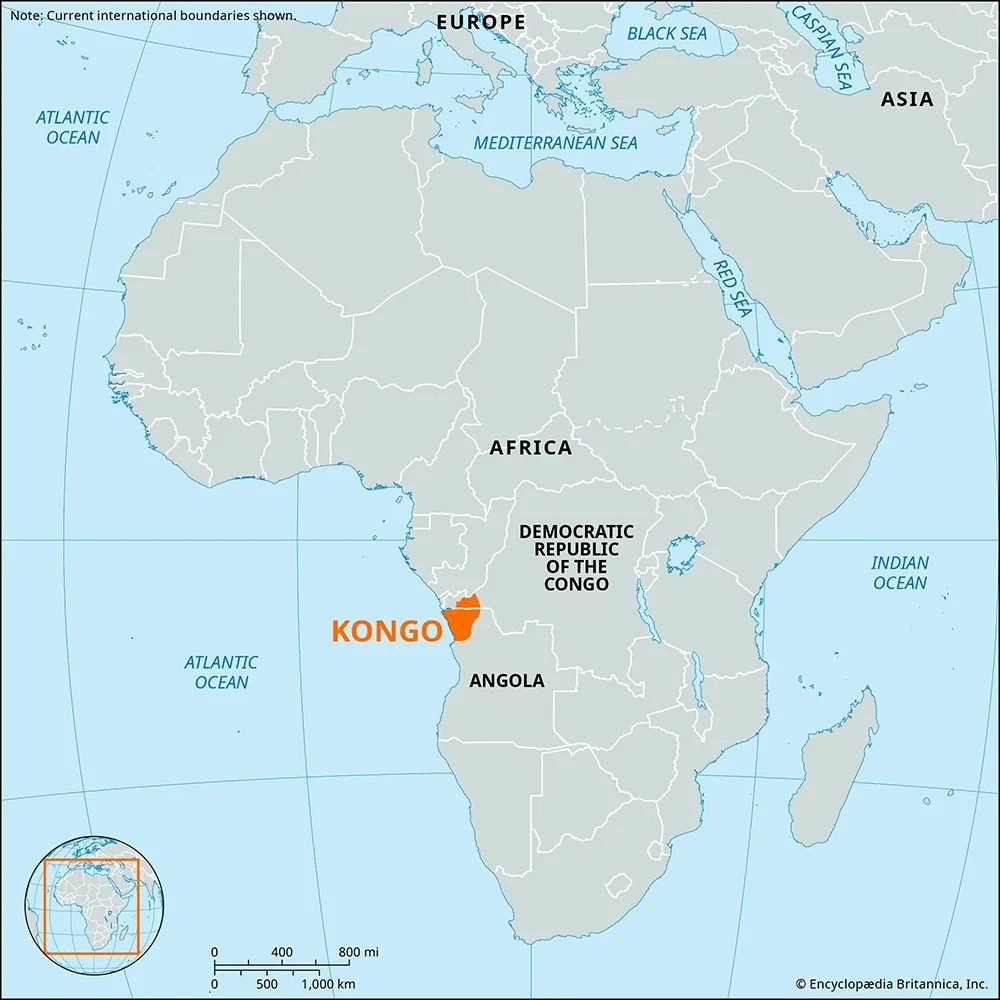
Casa Congo
Casa Congo is a hotel in Portobelo that has a really nice museum with all sorts of informational displays, artifacts, and artwork about the history of Portobelo and its Afro-indigenous culture. I wasn't going to stay overnight, but the museum is free to enter for anyone, so I spent some time here learning and recommend that anyone visiting Portobelo do the same.
Below are some pictures of Casa Congo and its museum.
Photo credit: The second picture below I took from PanaJam Tours.
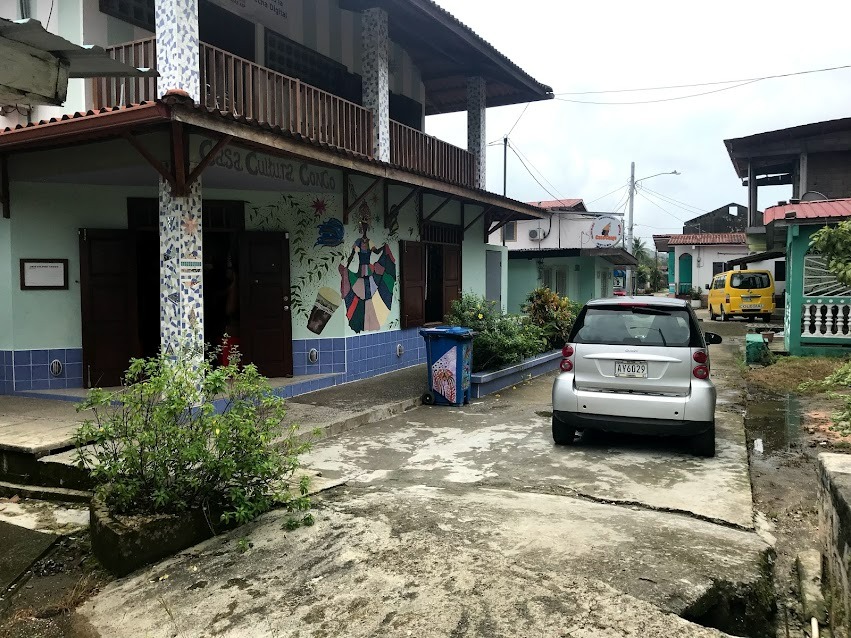
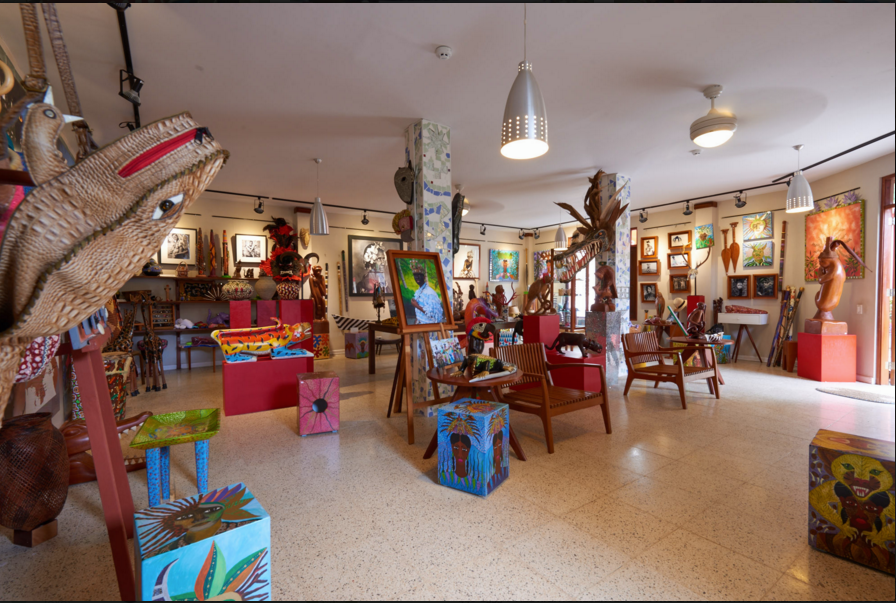
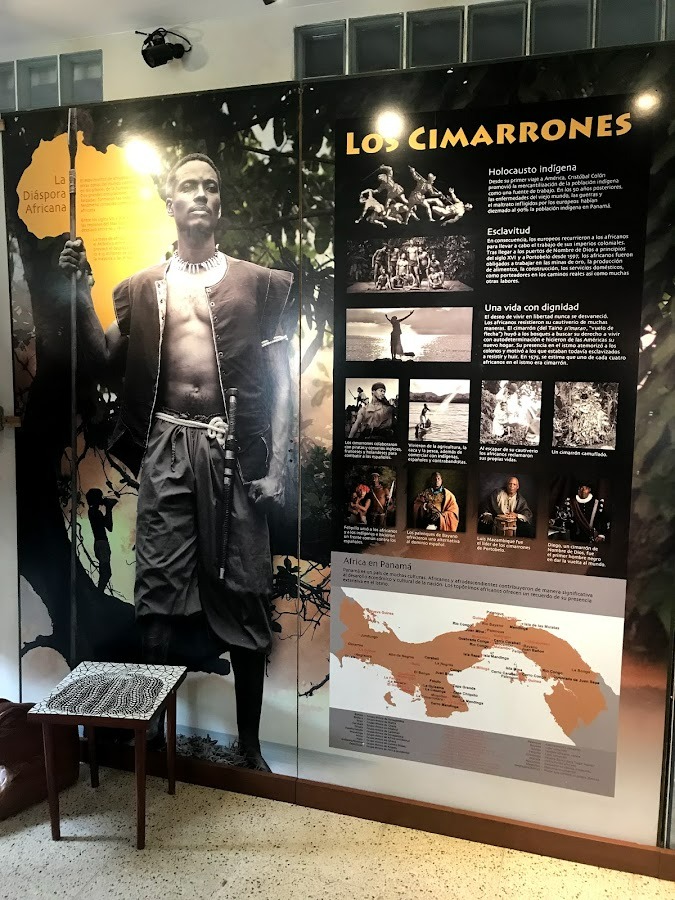
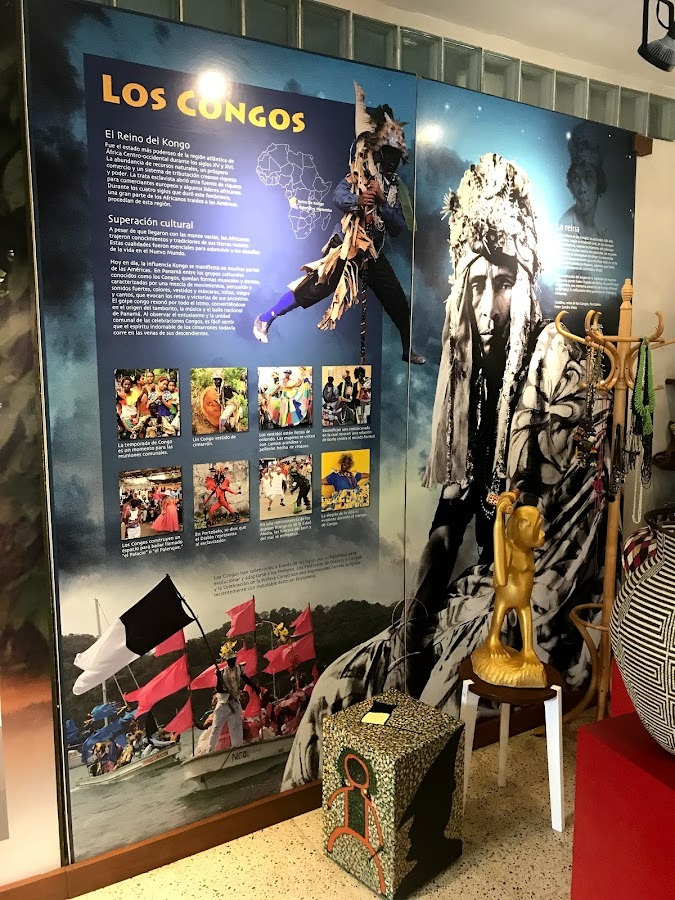
Public Art
There are a lot of public displays of art in Portobelo--Murals and artisan vendors, mainly. It is cool to walk around and check them out.
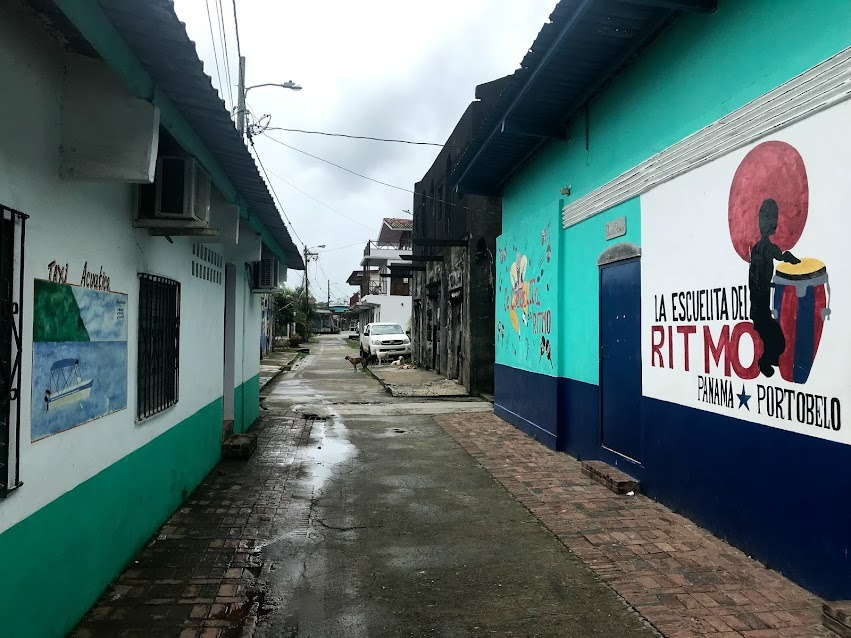
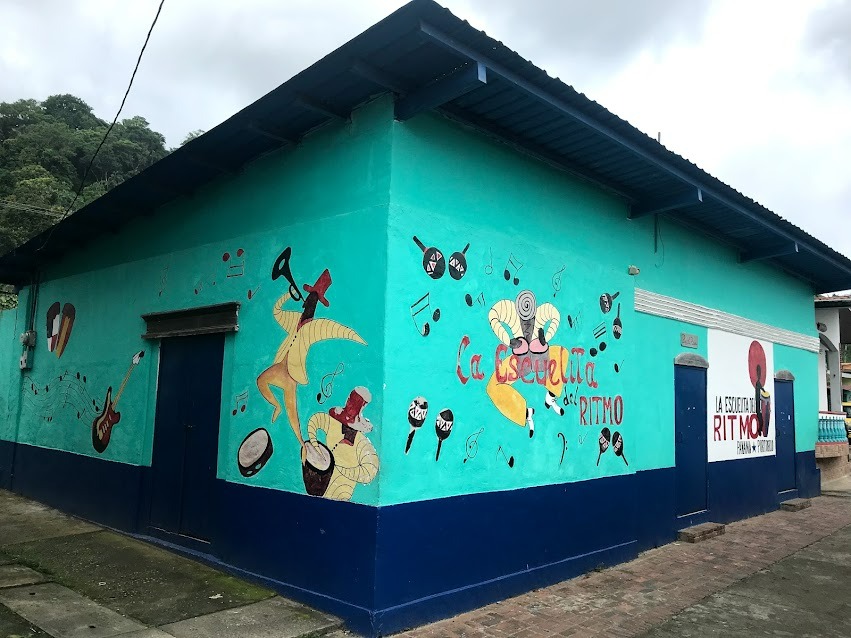
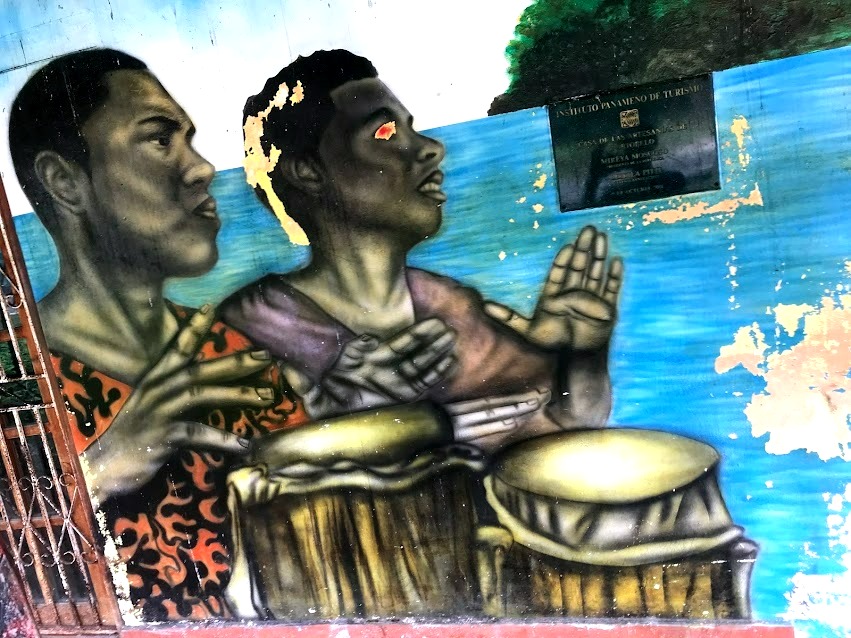
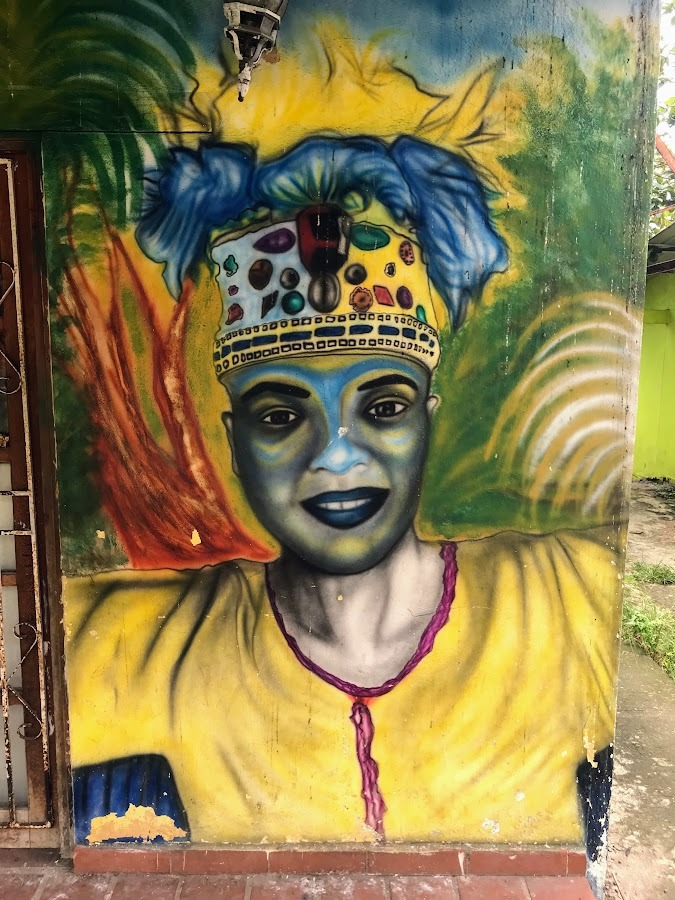
Return Trip: Portobelo --> Colón
I opted to return to Panama City by coach bus instead of the train. But, before I would be able to take the coach bus from Colón, I would have to rely on the same school bus that brought me to Portobelo to get me back to Colón first. Despite my fascination with the Local Bus, I didn't realize what kind of experience I was about to have.
First, 95% of the passengers ended up being students on their way home from school. They seemed young--maybe between 10 and 15 years old. It was total chaos. A number of the kids were misbehaving--jumping around and throwing stuff. The driver had to stop the bus and yell at them multiple times.
Meanwhile, I was drenched in sweat. The Caribbean sun, which normally kills me, was in full effect on this July day. There was obviously no air conditioning on the bus. It was nearly a two-hour ride. Less than halfway through it, I was completely wet.
And then, our bus crashed. We hit another car. Look at the picture below. You can see the bus driver and the driver of the car he hit, as well as a few other guys, arguing outside the bus.
The bus could not continue. The driver pulled over and the few of us passengers left had to get off. Luckily, by this point, we were in Colón, so I was able to walk the remaining miles to the bus terminal where I would get the coach bus back to Panama City. I read online that Colón was dangerous (although it seemed fine to me), so I tried not to have my phone out, but I took the second picture below that shows an area where I walked.
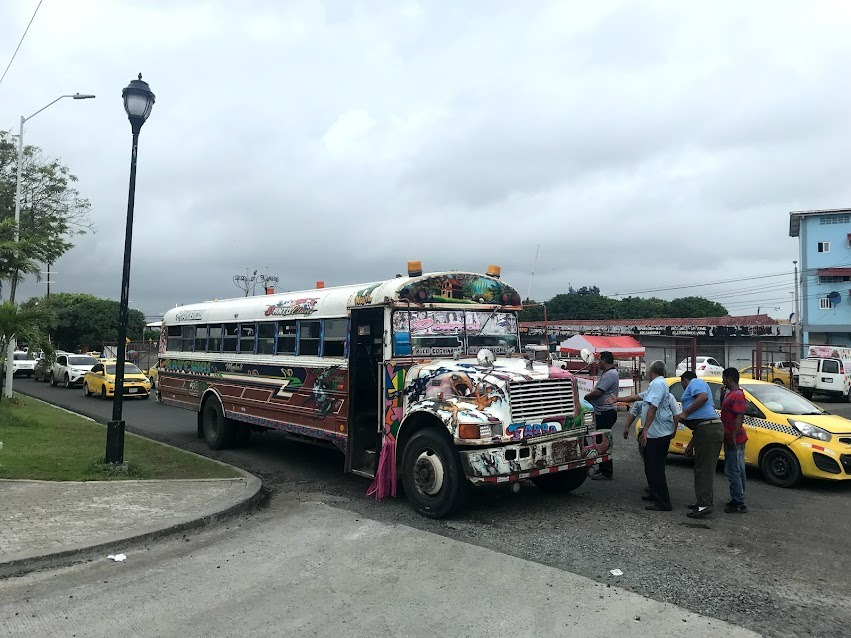
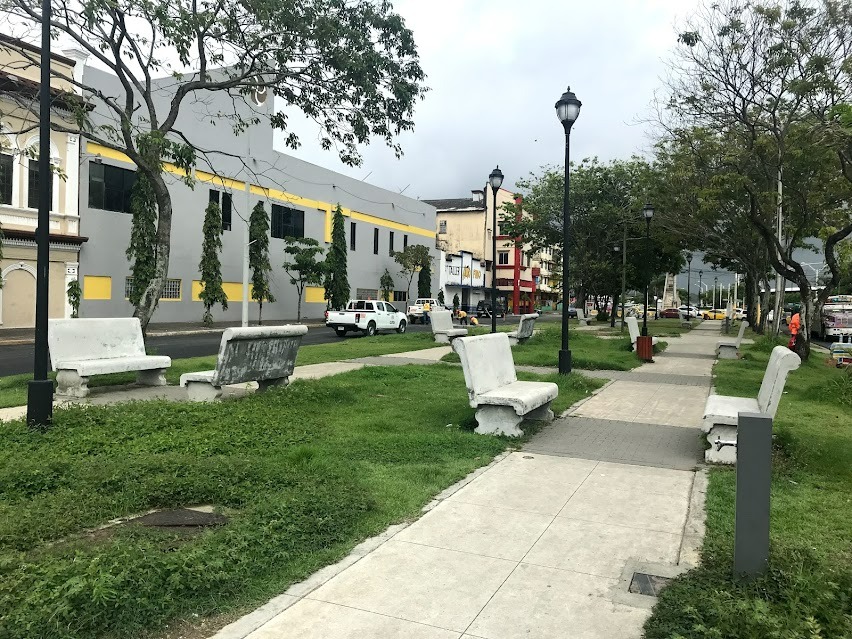
Return Trip: Colón --> Panama City
The Local Bus normally will drop you at the Colón Bus Terminal, which is the same place where you can get the bus from Colón to Panama City.
There is not a website where you can find schedules and buy tickets. The Rome2Rio website has decent information. It seems that this site identifies the companies that operate the busses between Colón and Panama City as UTRACOLPA and EPACOC Expreso Panama Colon Centroamerica. The site also says that the busses depart once every hour and that the ride lasts 1-hour 30-minutes.
Still, though, there aren't any schedules more specific than that posted online, so follow the same process from the morning: Go to the ticket booth, ask about busses to Panama City, and buy your ticket. (It's probably also important to make sure that in the morning, you asked about the bus schedule to Panama City for the entire day so that you can find out the departure time of the last bus for the day and make sure that you don't arrive past that time.)
The bus will cost between $2 and $4.
This bus was an air conditioned coach bus, which provided for a safe, comfortable ride back to Panama City.
Post a comment